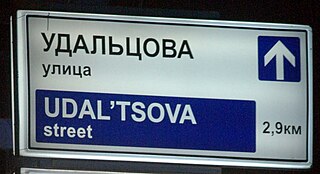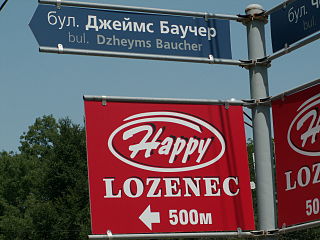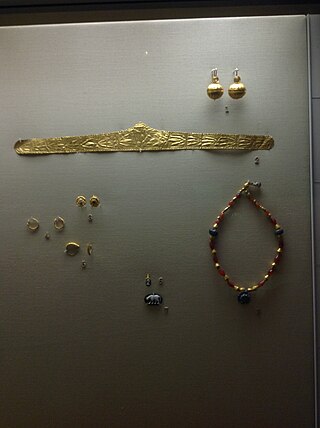Related Research Articles

Boudica or Boudicca was a queen of the ancient British Iceni tribe, who led an uprising against the conquering forces of the Roman Empire in AD 60 or 61. She is considered a British national heroine and a symbol of the struggle for justice and independence.

The Celts or Celtic peoples were a collection of Indo-European peoples in Europe and Anatolia, identified by their use of Celtic languages and other cultural similarities. Major Celtic groups included the Gauls; the Celtiberians and Gallaeci of Iberia; the Britons and Gaels of Britain and Ireland; the Boii; and the Galatians. The relation between ethnicity, language and culture in the Celtic world is unclear and debated; for example over the ways in which the Iron Age people of Britain and Ireland should be called Celts. In current scholarship, 'Celt' primarily refers to 'speakers of Celtic languages' rather than to a single ethnic group.

Roman Britain was the territory that became the Roman province of Britannia after the Roman conquest of Britain, consisting of a large part of the island of Great Britain. The occupation lasted from AD 43 to AD 410.

Roman numerals are a numeral system that originated in ancient Rome and remained the usual way of writing numbers throughout Europe well into the Late Middle Ages. Numbers are written with combinations of letters from the Latin alphabet, each letter with a fixed integer value. Modern style uses only these seven:

Sexi, also known as Ex, was a Phoenician colony at the present-day site of Almuñécar on southeastern Spain's Mediterranean coast.

The romanization of the Russian language, aside from its primary use for including Russian names and words in text written in a Latin alphabet, is also essential for computer users to input Russian text who either do not have a keyboard or word processor set up for inputting Cyrillic, or else are not capable of typing rapidly using a native Russian keyboard layout (JCUKEN). In the latter case, they would type using a system of transliteration fitted for their keyboard layout, such as for English QWERTY keyboards, and then use an automated tool to convert the text into Cyrillic.

Romanization of Bulgarian is the practice of transliteration of text in Bulgarian from its conventional Cyrillic orthography into the Latin alphabet. Romanization can be used for various purposes, such as rendering of proper names and place names in foreign-language contexts, or for informal writing of Bulgarian in environments where Cyrillic is not easily available. Official use of romanization by Bulgarian authorities is found, for instance, in identity documents and in road signage. Several different standards of transliteration exist, one of which was chosen and made mandatory for common use by the Bulgarian authorities in a law of 2009.

Miletopolis or Miletoupolis (Μιλητούπολις) was a town in the north of ancient Mysia, at the confluence of the rivers Macestus and Rhyndacus, and on the west of the lake which derives its name from the town. It was a Milesian colony. Strabo mentions that a part of the inhabitants of the town were transferred to Gargara at some indeterminant time.

Hercules' Club is a Roman Empire and Migration-era artefact type.
A birrus or birrus brittanicus was a rainproof, hooded woollen cloak, characteristically worn in Britain and Gaul at the time of the Roman Empire and into the Middle Ages.
Abermagwr is a small settlement in the county of Ceredigion, Wales. It is on the B4340 road and is 11 kilometres (7 mi) southeast of the town of Aberystwyth.

Chumerna Glacier is the 2.2 km long and 1.9 km wide glacier draining the north slopes of Stavertsi Ridge on Albena Peninsula, Brabant Island in the Palmer Archipelago, Antarctica. It flows northeastwards to enter the channel between Brabant Island and Liège Island east of Hales Peak.
Acalissus or Akalissos was a town of ancient Lycia, an early bishopric, and remains a titular see of the Roman Catholic Church. Coins were minted at Acalissus, some of which are housed at numismatic collections.

Balanstra Glacier is the 12 km long and 4 km wide glacier on Brabant Island in the Palmer Archipelago, Antarctica situated northeast of Hippocrates Glacier and southwest of Mackenzie Glacier. It drains the southeast slopes of Stribog Mountains, flows east-southeastwards and enters Pampa Passage south of Momino Point and north of Pinel Point.
Uranium or Ouranion was a town of ancient Caria, on the Bodrum Peninsula. Uranium was a polis (city-state) and a member of the Delian League. Uranium appears in the Athenian tribute lists and paid an annual tribute of 17 drachmae, 1 obol.
Amynanda was a town of ancient Caria. Amynanda appears in the Athenian tribute lists and paid an annual tribute of 50 drachmae, 5 obol.
Erines or Erine (Ἐρινε͂) was a town of ancient Caria, probably on the Bodrum Peninsula. Erines appears in the Athenian tribute lists and paid an annual tribute of 68 drachmae, 5 obol. It also appears on numerous ancient inscriptions.
Ula or Oula was a town of ancient Caria. Its name does not appear in ancient writers, but is inferred from ancient inscriptions. Oula appears in the Athenian tribute lists and paid an annual tribute of 17 drachmae, 1 obol.
Hieron Oros was a town of ancient Pontus on the Black Sea coast of Asiatic Turkey. Though now disappeared, the site is thought to have been around 25km west of Trabzon at the northeastern tip of Çarşıbaşı-Fener municipality, on a cape that's now topped by a French-built lighthouse dating from 1886. Though the lighthouse is now in a village known as Fener, the lighthouse itself still bears the name Yoroz, one of three names reported for the place by 19th-century British traveller H. F. B. Lynch who described it in 1893 as the promontary of the "sacred mountain". According to Barrington, the site is also known as İncir Liman though the local name for the small fishing port is Yoroz Limanı.
Dioclea or Dioklea, Dioclia or Dioklia, Diocleia or Diokleia, was a town of ancient Phrygia, inhabited during Roman and Byzantine times.
References
- ↑ Birley, Anthony R. (29 September 2005). The Roman Government of Britain. OUP Oxford. pp. 369–370. ISBN 978-0-19-153087-6.